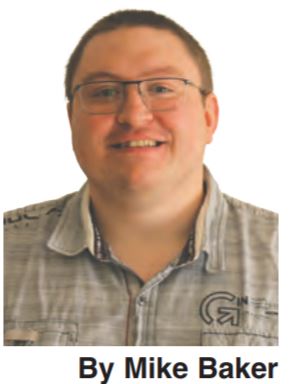I left last week’s Teeny Tiny Summit in Minden feeling pretty inspired.
Keynote speaker, Peter Kenyon, was a breath of fresh air as he spent an hour dissecting what it takes to build strong, thriving communities. Only, rather than regurgitating a series of verbose ‘how-to’ bullet points telling people how to improve life in Haliburton County, he said they need only do one thing – listen.
Kenyon believes the answers to all a community’s problems lies with its people.
As a society, I feel there’s been a shift recently in that whenever there’s a problem, we look to others to fix it – usually government. The issue with that? Governments have become so bloated, so fixated on process that it can take years to bring even the simplest solutions forward.
Or they’re so oblivious they only see an issue when it’s too late.
Just look at housing. Anyone paying attention could have told you, given the demand for homes from young Canadians, the refusal or inability of successive federal and provincial governments to invest in new builds, and the growing number of immigrants coming to Ontario, that we were on the cusp of a housing crisis.
The same can be said, locally, when it comes to childcare.
Usually, when these big-ticket issues arise, they land on some politician’s desk, or a council’s table, that maybe strike up a volunteer committee, which gets frustrated by a lack of action and disbands. Or worse, pawns it off to a consultant who, for big dollars, puts together a verbose ‘how-to’ list of bullet points telling people what they could be doing.
There’s been a lot of that in Haliburton County in recent years.
Kenyon suggested the first call should be going directly to the public. Host a town hall asking for people to come and suggest ideas. Make it a time that is accessible to everyone. Buy some pizzas and offer a free meal.
This is what the town of Kulin, about 300 kilometres east of Perth, Australia did when it realized it was losing its young people. The community decided the best way to retain talent is to make itself as attractive a place as possible to the younger generations. Volunteers launched the Kulin Bush Races in 1994, which now attracts 5,000 visitors annually and pours about $2.6 million into the local economy.
When they found the benefits of the races weren’t particularly long-lasting, the community came together to raise $25,000 to buy a waterslide and establish a waterpark. When they learned the slide was located 3,000 kilometres away, people volunteered to drive on their own dime to dismantle and transport it back to Kulin.
It’s worked – Kulin now has one of the youngest demographics in Australia. More babies were born there than in any other small town across the country.
These young people have revitalized the local economy. Stores are fully staffed, services you wouldn’t usually find in a small town are available. And they all invest locally too – Kulin was one of the first communities in Australia to open its own community bank. Its people rallied to raise $1 million to save its pub from going under, re-establishing it as a community hub.
The County does well from a tourism perspective but given the difficulty many full-time residents have making ends meet here, it’s incumbent on us to do better. That’s the only way we’ll get our young people to stay.
We need to involve them in local decision-making and help them bring their plans to fruition. Crazy ideas can work – Broome, Australia became world famous for its camel rides on public beaches. It’s now a multi-million-dollar business and one of the community’s top employers. That came from a teenager who wanted to do something different.
Engage our youth. Maybe then Haliburton County could become the Canadian-equivalent of Kulin – a true example of what can be achieved when a community comes together.




